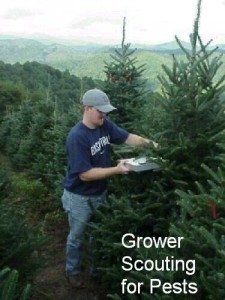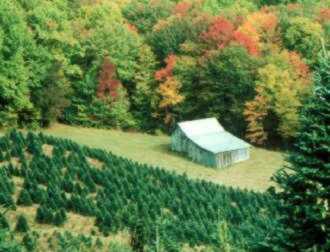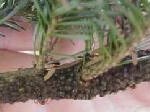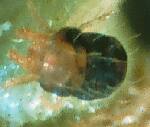Post-Harvest Pests on Christmas Trees: Control on the Retail Lot
go.ncsu.edu/readext?294173
en Español / em Português
El inglés es el idioma de control de esta página. En la medida en que haya algún conflicto entre la traducción al inglés y la traducción, el inglés prevalece.
Al hacer clic en el enlace de traducción se activa un servicio de traducción gratuito para convertir la página al español. Al igual que con cualquier traducción por Internet, la conversión no es sensible al contexto y puede que no traduzca el texto en su significado original. NC State Extension no garantiza la exactitud del texto traducido. Por favor, tenga en cuenta que algunas aplicaciones y/o servicios pueden no funcionar como se espera cuando se traducen.
Português
Inglês é o idioma de controle desta página. Na medida que haja algum conflito entre o texto original em Inglês e a tradução, o Inglês prevalece.
Ao clicar no link de tradução, um serviço gratuito de tradução será ativado para converter a página para o Português. Como em qualquer tradução pela internet, a conversão não é sensivel ao contexto e pode não ocorrer a tradução para o significado orginal. O serviço de Extensão da Carolina do Norte (NC State Extension) não garante a exatidão do texto traduzido. Por favor, observe que algumas funções ou serviços podem não funcionar como esperado após a tradução.
English
English is the controlling language of this page. To the extent there is any conflict between the English text and the translation, English controls.
Clicking on the translation link activates a free translation service to convert the page to Spanish. As with any Internet translation, the conversion is not context-sensitive and may not translate the text to its original meaning. NC State Extension does not guarantee the accuracy of the translated text. Please note that some applications and/or services may not function as expected when translated.
Collapse ▲Christmas trees in North Carolina are grown in a near-natural setting. Most tree patches are adjacent to woods. Native broad leaf plants and grasses serve as ground covers around trees. There is an abundance of wildlife, such as deer, turkey and songbirds. There is also an abundance of insect activity as butterflies, pollinators and natural predators like lady beetles and praying mantids find a place to live and thrive.
Do’s and Don’ts |
| The following are some simple steps you can take to reduce the chances of selling a tree with post-harvest pests |
| GET EDUCATED: Know what these pests look like so you can recognize them. The best source of information is the North Carolina State web site found at: http://christmastrees.ces.ncsu.edu/badbugs/ |
| CLEAN UP: One concern the public has with real trees is messiness. Shaking or rinsing trees off with water before displaying them will reduce the number of dead needles, leaves, and pollen on trees. It will also shake or wash pests off. If you see insects such as Cinara aphids falling out of a tree, set it aside for more thorough inspection and treatment. |
| TREAT IF NECESSARY: Most post-harvest pests are easy to control. A thorough job of washing off the tree with water may be enough. Insecticidal soap is the safest material to spray if washing doesn’t get the job done. Insecticides labeled for spraying in the home for household insect control such as bifenthrin or permethrin (look at the list of active ingredients on the label) will also control these pests while being safe to use. |
| HAVE INFORMATION AVAILABLE: The website includes a handout for homeowners regarding these pests. (See link below.) You can download, print, and keep a copy on hand for any customers who have questions. Make sure everyone on your staff knows where to find the handout if pest issues come up. |
| KEEP THE GROWER INFORMED: If you do find post-harvest pests, let the grower know so that steps can be taken to control other pests. |
Unwanted Hitchhikers
Christmas trees provide a well-protected place for insects to live through the cold and snow of winter. When you bring the tree into the home or even to the warmer climates of a southern retail lot, the insects think spring has come and become active again, even starting to reproduce. There are several kinds of insects that spend the winter in conifers such as Fraser fir. Fortunately, with Christmas trees, these unwanted hitchhikers do not bite or cause disease. Like ants at a picnic, they are just a nuisance. In many ways these hitchhikers are a symptom of a fresh tree recently harvested. Post harvest pests on Christmas trees can include Cinara aphids, spider mites, and praying mantids.
Rarely Occur
Most years, these pests are rare. Perhaps one tree in 100,000 has any one of these pests on it. North Carolina Christmas tree growers are addressing this issue as it arises. These pests are more common when the weather is still warm at harvest. Growers are increasingly scouting in the fall and treating for these pests in August or September if they find them. But no pesticide treatment is 100% effective. It only takes a few live individuals surviving on the tree for these pests to end up in the home where they will continue to reproduce.
Not the Grower’s Fault
 Christmas tree growers regularly scout for pests and control them when necessary. But sometimes only one tree in a whole field of trees has one of these post-harvest pests on it. No one notices they are in the tree until they are brought into the home. In many ways, these hitchhikers are a symptom of a fresh tree recently harvested. If the tree wasn’t fresh, they wouldn’t be there. Don’t get bugged by unwanted pests! Take the necessary steps to insure that your customers will enjoy the Christmas they deserve with a fresh, pest-free tree.
Christmas tree growers regularly scout for pests and control them when necessary. But sometimes only one tree in a whole field of trees has one of these post-harvest pests on it. No one notices they are in the tree until they are brought into the home. In many ways, these hitchhikers are a symptom of a fresh tree recently harvested. If the tree wasn’t fresh, they wouldn’t be there. Don’t get bugged by unwanted pests! Take the necessary steps to insure that your customers will enjoy the Christmas they deserve with a fresh, pest-free tree.
Rogues’ Gallery of Post-Harvest Pests
For More information
- Post-Harvest Pests on Christmas Trees: Consumer Information / Printer Friendly Version (pdf)
- Cinara Aphids on Christmas Trees in North Carolina
- “Bugs” and the Real Christmas Tree (Pennsylvania Dept. of Agriculture)
Prepared by Jill Sidebottom and Jeff Owen Area Christmas Tree Specialists NCSU College of Natural Resources N.C. Cooperative Extension Service






